Rare Rides Icons: The History of Stutz, Stop and Go Fast (Part XII)

In our last entry in the Stutz saga, we covered the final few years of the Blackhawk that originated in 1971. Through various trim transformations and minor updates, the ’71 lived all the way through the 1979 model year. That final year it was also transformed into the very rare Bearcat targa convertible. But the winds of change were blowing: Detroit downsizing was already well underway, and Stutz was out of 1969 Pontiac Grand Prix platforms to use. The incredibly expensive Blackhawk sold roughly 350 examples in its first generation.
Because of domestic market downsizing, the contemporary G-body Grand Prix of 1980 wasn’t large enough for Blackhawk purposes. Instead, Stutz turned to the B-body platform, and specifically the Pontiac Bonneville’s two-door variant. And though it was marketed as a coupe by GM, the roofline was so formal your author would file it as a two-door sedan. In any event, the new hardpoints of the Bonneville meant considerable visual changes on the 1980 Blackhawk coupe.
Note: Images shown in this article are of a Blackhawk from 1982, which reflects some revisions over the more unique trappings of the 1980 model.
Stutz aimed to recreate the look of the first Blackhawk in the second, albeit with smaller proportions. The looks were clearly based upon the designs the company commissioned from Paolo Martin in 1976, then altered to fit the Bonneville platform that was not in existence when Martin completed the drawings. The efforts Stutz made on the second Blackhawk were mostly of a water this down nature, and the car lost a lot of the brashness that made it so unique in 1971.
The Blackhawks chromed nose still stuck out proudly in front of the Blackhawk and lead the way, but it was not as extended as before. Fenders extended to form awnings over the free-standing driving lamps too but were not as pointed or extended as they had been. Exner’s pride and joy – headlamps that stood on stalks independent of the front end – remained intact.
And though the unique lamps were largely unchanged, the chrome bumper underneath them did not fare as well. The original wrap-around bumper design was replaced by a squarer version. No longer a bespoke piece, the bumper was just a slight revision of that on the Bonneville: It had different corner pieces than the donor car, and they wrapped further around the fender. The easiest way to tell at a glance if the Blackhawk before you is a first or second edition is to check for turn indicator lenses integrated into the bumper. That’s a second-gen trait, and they’re right from the Bonneville.
The hood was more rounded and went without the strong power bulge of the prior model. It flowed back to a more upright A-pillar, which housed the windshield and door glass from the Bonneville. Doors were also ported directly, though Stutz added its own rear-hinged exterior door handle in place of the rather plain-looking GM dogleg. Costly to make, the special door handle lasted only from 1980 to 1981, as the Bonneville’s door handle appeared in 1982.
The thick B-pillar of the old Blackhawk was made even thicker in its transition to B-body, as the team at Stutz had to maintain the Bonneville’s roofline. It surely created a huge blind spot in everyday driving too. Said blind spot was extended via a shrunken rear window: The B-pillar steel wrapped around to the rear, and cut off about a third of the total glass area when compared to the Bonneville. Down the side of the coupe, the once bulging and pronounced fenders were constrained and smoothed. The sweeping character line down the side was still outlined in chrome, but weaker than before. Gone was the strong ridge that flowed down the body under the chrome highlight.
The weakness of the fender was most obvious at the rear where the trim strip arched over the rear wheel to little effect; it had no swoopy metal to cling to. The rear end looked much simpler than before, though it kept to Exner’s same basic design scheme. Rear fenders ended in a smoothed curve and lacked the pronounced extended overhangs of the old Blackhawk. The custom bumper of the old car was replaced with one that looked to be a Bonneville bumper sans trim strips.
Unlike the first-gen Blackhawk where the tail lamps hung low beneath the bumper, the situation was reversed in 1980. Basic circular lenses, six in total, were astride the license plate and recessed into an oval-shaped area. Above, the Blackhawk’s exposed spare tire remained. Dependent on customer preference, it was sometimes concealed via a vinyl covering that matched the paint (not the interior, as before).
Inside, the new Blackhawk felt strangely familiar to customers of the old one. One might have assumed the interior experienced an upgrade to B-body similarity in the transition, but no! Stutz ported over almost everything from the Seventies Blackhawk into 1980.
The dash remained the same shape, switches and fittings were from the Seventies, and even the gauges were the same as before. New features included a revised door panel that contained the window switches (previously located on the center console), and a trip computer system with many buttons that appeared where the clock and window switches used to be.
Worth noting, the trip computer was an optional extra. In cars where it was not optioned, there appeared to be an additional ashtray and a lot of room for toggle switches that looked to be for heated seats. By the Blackhawk of 1982, the old school Italian/English gauges were removed by the old cost-cutting monster. In their stead was a standard horizontal speedometer from a contemporary GM, all backed in gold.
The new Blackhawk’s steering wheel was an ever-changing thing. Earlier versions used the early Eighties Oldsmobile 88 steering wheel, all covered in leather and additional padding. Within a couple of years, that changed to the more modern early-mid Eighties 88 wheel. It’s more difficult to track the yearly Blackhawk changes in the second generation because the company marketed it less, sales were slowing, or perhaps both.
Rear passenger accommodation was much the same as it was in the old Blackhawk, though there was a new addition courtesy of the enormous B-pillar ruining the view: storage cabinets for glassware and liquor! Near the rear passenger’s face on either side, there was a mirror (which was unfortunately vertical, so not that useful) along with a polished walnut door that slid back into the B-pillar to reveal a small compartment with two glasses and a liquor cabinet on the other side. The liquor storage was large enough for five or six airplane-sized bottles.
On the power front, there was no longer a GM big block specially massaged for extra power. Stutz customers were limited to those V8 engines available in the B-body, though at least there were several on offer. The smallest was the 4.3-liter Pontiac V8, alongside 4.9- and 5.7 liter Pontiac mills.
The lone Buick engine on offer was the 350, also 5.7-liters like the Pontiac. Chevy also offered their 350, or their smaller 305 (5.0L). The largest engines were courtesy of Pontiac and Oldsmobile, and still broke the 400 cubic-inch barrier: 400 (6.6L) for the Pontiac, or 403 (still 6.6L) with the Olds. Transmissions were of course automatic (not that anyone wanted a manual Blackhawk), the well-regarded THM350 three-speed.
The Blackhawk continued on in its second generation format with trim fiddling here and there for a few years. Much like the first generation, it was subject mostly to changes to the order of decreasing build costs. Meanwhile, the sixth generation Bonneville was in its B-body guise only through 1981 when it transitioned to become a smaller G-body in 1982. Presumably, Stutz had purchased enough Bonnevilles to last but did bow and source some interior components from the newer Oldsmobile 88. As before, Blackhawk became an increasingly mixed bag. The 88 remained a rear-drive B-body through 1985.
1985 proved to be the end of the Blackhawk. That was the last year Stutz registered any new Blackhawks, though the artisans in Italy worked so slowly that 1985 cars were not finished until 1987. In total, Stutz sold between 150 and 250 gen-two Blackhawks as the Neoclassical car era faded. But we aren’t finished just because we’ve concluded the Blackhawk saga. Oh no, the reborn Stutz made a few other cars too. Next time we’ll return to the most familiar of those, the Bearcat convertible.
[Images: YouTube]

Interested in lots of cars and their various historical contexts. Started writing articles for TTAC in late 2016, when my first posts were QOTDs. From there I started a few new series like Rare Rides, Buy/Drive/Burn, Abandoned History, and most recently Rare Rides Icons. Operating from a home base in Cincinnati, Ohio, a relative auto journalist dead zone. Many of my articles are prompted by something I'll see on social media that sparks my interest and causes me to research. Finding articles and information from the early days of the internet and beyond that covers the little details lost to time: trim packages, color and wheel choices, interior fabrics. Beyond those, I'm fascinated by automotive industry experiments, both failures and successes. Lately I've taken an interest in AI, and generating "what if" type images for car models long dead. Reincarnating a modern Toyota Paseo, Lincoln Mark IX, or Isuzu Trooper through a text prompt is fun. Fun to post them on Twitter too, and watch people overreact. To that end, the social media I use most is Twitter, @CoreyLewis86. I also contribute pieces for Forbes Wheels and Forbes Home.
More by Corey Lewis
Latest Car Reviews
Read moreLatest Product Reviews
Read moreRecent Comments
- ToolGuy Toyota is confused.
- 28-Cars-Later Just one of many problems.
- ToolGuy Here's some info on the "MEB" -- including this quote:"The Modular Electric Toolkit jettisons all the ballast of the fossil age"And Ford is teaming up with these guys? I see nothing but good things coming from this collaboration. 😉 Very clear direction, everyone on the same page.(Pretend that I'm sitting in a renovated train station while I'm saying this, and it will have more gravity.)
- Rick T. "The top-down push to electrification is even more puzzling here, as the U.S. has a notoriously sparse charging network, and EVs remain too expensive for a large portion of buyers."I'm not sure what top down pushes of any kind have had to do with reality on the ground.
- Ajla But no ES500h at this time? 🤔 I'd be a little surprised if they bothered to make a trim with the 2.4T or any other ICE-only version. I'm thinking a 250hp AWD hybrid will be the "ES350h". Then whatever these "e" versions are and then maybe something with the Hybridmax.



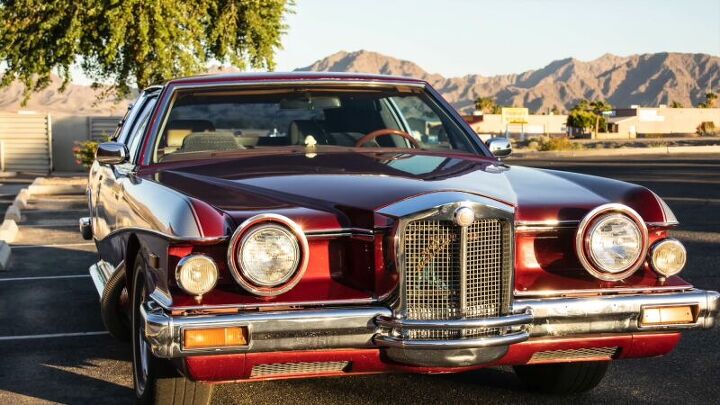
























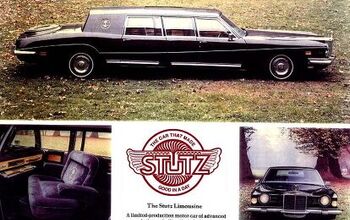

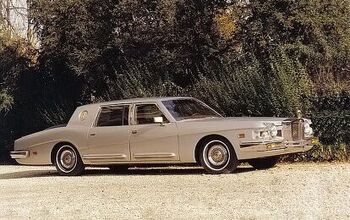
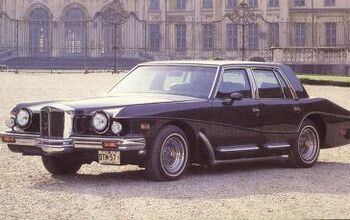
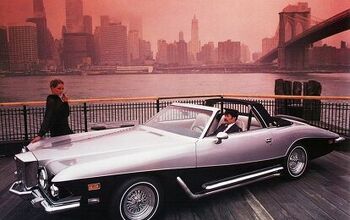










Comments
Join the conversation
I am waiting for the next generation Blackhawk made on Ultium EV scateboard. Bill Gates "Let's change climate" billionaire will buy one...no, two.
Still better styling than Korean cars